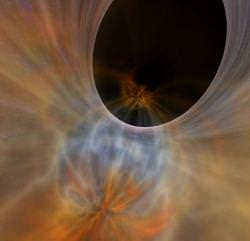NASA is about out of options for keeping U.S. astronauts in space after 2011.
Unless President George Bush intervenes, or whoever succeeds him in January immediately steps into the space arena, the dismantling of the space shuttle program will be too far along to reverse course.
"That horse has left the barn," wrote NASA's former shuttle manager Wayne Hale in his Web blog.
The three-ship fleet is scheduled for retirement in 2010. NASA wants to use the shuttle's budget for developing replacement ships that can go to the moon as well as to the International Space Station. The new vehicle, called Orion, won't be ready until 2015 — five years after the shuttle stops flying.
NASA had counted on buying Russian Soyuz capsules to transport crews to the space station during the gap. But in recent interviews, NASA administrator Michael Griffin said he has no hope Congress will pass the legislation needed for NASA to keep the Soyuz assembly lines running.
"My guess is that there is going to be a lengthy period with no U.S. crew on (the space station) after 2011," Griffin wrote in an e-mail to top NASA managers that was posted on the Orlando Sentinel's Web site.
The agency cannot purchase Russian rockets unless it receives an exemption from a trade sanction Congress levied in 2005 after Russia reportedly helped Iran develop nuclear weapons technology. Griffin has said the exemption to the Iran, North Korea and Syria Nonproliferation Act needs to be in place by early 2009 to keep U.S. and partner astronauts in orbit.
U.S. outrage over Russia's handling of a dispute with neighboring Georgia has pretty much nixed any chance Congress will lift the trade ban again, Griffin said.
"Exactly as I predicted, events have unfolded in a way that makes it clear how unwise it was for the U.S. to adopt a policy of deliberate dependence upon another power for access to ISS," Griffin wrote.
"In a rational world, we would have been allowed to pick a shuttle retirement date to be consistent with Ares/Orion availability … and we would have been provided the necessary budget to make it so.
"The rational approach didn't happen, primarily because for OSTP (Office of Science and Technology Policy) and OMB (Office of Management and Budget) retiring the Shuttle is a jihad rather than an engineering and program management decision," Griffin wrote.
Despite the dire forecast, NASA's associate administrator for space operations Bill Gernstenmaier said there was still time to work out a solution. For now, the shuttle program's top priority needs to be next month's mission to upgrade the Hubble Space Telescope.
"We need to step back from the hum of the outside world and focus on this Hubble mission," Gerstenmaier said.












